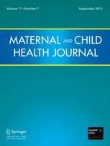
Abstract
Background
The Elipse™ intragastric balloon (EIGB) is a new swallowable balloon for weight loss (WL). Preserving metabolically active fat-free mass (FFM) and resting metabolic rate (RMR) during WL are crucial to maximize fat mass (FM) loss. After EIGB placement, a standard low-calorie diet (LCD) is generally prescribed. A low-calorie ketogenic diet (LCKD) has proven to be safe and effective in reducing FM while preserving FFM and RMR.
Objective
To prospectively compare the effects on WL, FM, FFM, and RMR in two groups of patients who were randomized to two different diets: LCKD and a standard LCD after EIGB placement.
Methods
WL, FM, FFM, and RMR were measured before EIGB and at 4 months in 48 patients who received either a LCKD (n = 24) or a standard LCD (n = 24). Compliance in following the prescribed diet was determined with food frequency questionnaires in all patients. The impact of LCKD and LCD on renal function was also evaluated.
Results
The LCKD group showed a significantly lower decrease in FFM and RMR when compared with the LCD group (3.55 vs 14.3%, p < 0.001; 9.79 vs 11.4%, p < 0.001, respectively). FM decreased more significantly with LCKD compared to LCD (41.6 vs 33.1%, p = 0.0606). Compliance in following the prescribed diets, without negative impact on renal function, was found.
Conclusion
Based on our findings, despite the small sample size, we were able to support the hypothesis that LCKD is associated with an increased FM loss while reducing the FFM loss and the RMR, without interfering with renal function after EIGB.







